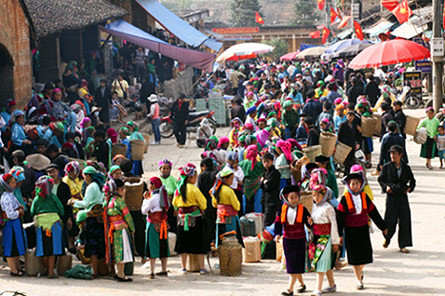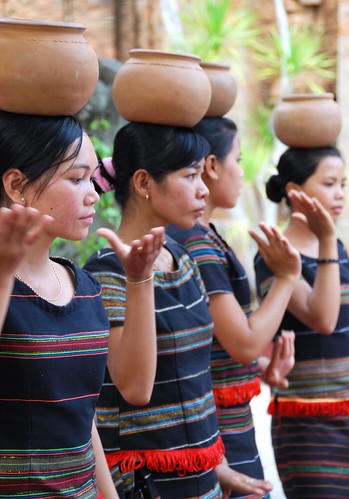But how do you ensure that while visiting, you don’t cause unintended damage or offence? You can show your respect for a culture by being educated about its ways, beliefs and taboos. Here are a few general guidelines:
1. Always ask permission before taking photos of tribespeople.
2. Don’t touch totems at village entrances or sacred items hanging from trees.
3. Avoid cultivating a tradition of begging, especially among children.
4. Avoid public nudity and don’t undress near an open window.
5. Don’t flirt with members of the opposite sex.
6. Don’t drink or do drugs with the villagers.
7. Smile at villagers even if they stare.
8. Ask your guide how to say ‘hello’.
9. Avoid public displays of affection, which might be viewed as offensive to the spirit world.
10. Don’t interact with the villagers’ livestock; avoid interacting with jungle animals, which might be viewed as visiting spirits.
11. Don’t step on the threshold of a house, prop your feet up against the fire or wear your shoes inside.
 The local annual "love market" in Ha Giang, Vietnam
The local annual "love market" in Ha Giang, Vietnam
If you want to meet minority cultures, you’ll often have to get away from popular tourist centres; how far you’ll have to go depends very much on the country and how popular it is with visitors.
The trekking industry in Thailand is very developed and a minority visit can be a disappointment for some, but much depends on the operator organising the trip. Northern Vietnam and the Xīshuāngbǎnnà region of Yúnnán have emerged as popular places to experience minority cultures. Laos is really taking off as a destination to meet minority groups, partly due to its ethnically diverse population and in part due to the relatively small numbers of visitors venturing off the beaten path.
Cambodia and the Central Highlands of Vietnam provide a home to some minority groups in the northeast, but as they dress like lowland Khmer or Vietnamese, they have been less exposed to mass tourism than elsewhere. As for the effects of trekking on the host tribes, many agree that individuals within the village might financially benefit when the trekking companies purchase supplies and lodging, but the overall pluses and minuses are considered to be minimal compared to other larger institutional forces.
Lonely Planet has a suggestion of the top 5 spots for a genuine interaction with a minority culture in Southeast Asia:
1. Cambodia: Ratanakiri
2. Laos: Muang Sing
3. Thailand: Chiang Rai
4. Vietnam: Sapa
5. Yúnnán: Xīshuāngbannà
But there are many other important minority groups in the region, some rendered stateless by the conflicts of the past, others recent migrants to the region, including the many hill tribes.
Cham
The Cham people originally occupied the kingdom of Champa in southcentral Vietnam and their beautiful brick towers dot the landscape from Danang to Phan Rang. Victims of a historical squeeze between Cambodia and Vietnam, their territory was eventually annexed by the expansionist Vietnamese. Originally Hindu, they converted to Islam in the 16th and 17th centuries and many migrated south to Cambodia. Today there are small numbers of Cham in Vietnam and as many as half a million in Cambodia, all of whom continue to practise a flexible form of Islam. Over the centuries, there has been considerable intermarriage between Cham and Malay traders.
Hmong
The Hmong are one of the largest hill tribes in the Mekong region, spread through much of northern Laos, northern Vietnam, Thailand and Yúnnán.Hmong groups are usually classified by their colourful clothing, including Black Hmong, White Hmong, Red Hmong and so on. The brightest group is the Flower Hmong of northwest Vietnam, living in villages around Bac Ha. The Hmong are known for their embroidered indigo-dyed clothing and their ornate silver jewellery. There may be as many as one million Hmong in the Mekong region, half of them living in the mountains of Vietnam.
Jarai
The Jarai are the most populous minority in the Central Highlands of Vietnam, northeast Cambodia and southern Laos. Villages are often named for a nearby river, stream or tribal chief, and a nha-Rong (communal house) is usually found in the centre. Jarai women typically propose marriage to the men through a matchmaker, who delivers the prospective groom a copper bracelet. Animistic beliefs and rituals still abound, and the Jarai pay respect to their ancestors and nature through a host or yang (genie). The Jarai construct elaborate cemeteries for their dead, which include carved effigies of the deceased. These totems can be found in the forests around villages, but sadly many are being snapped up by culturally insensitive collectors.
Dzao
The Dzao (also known as Yao or Dao) are one of the largest and most colourful ethnic groups in Vietnam and are also found in Laos, Thailand and Yúnnán. The Dzao practise ancestor worship of spirits, or ban ho (no relation to Uncle Ho), and hold elaborate rituals with sacrifices of pigs and chickens. The Dzao are famous for their elaborate dress. Women’s clothing typically features intricate weaving and silver-coloured beads and coins – the wealth of a woman is said to be in the weight of the coins she carries. Their long flowing hair, shaved above the forehead, is tied up into a large red or embroidered turban, a sort of skinhead-meets-silk combination.
Source : lonelyplanet






0 comments:
Post a Comment